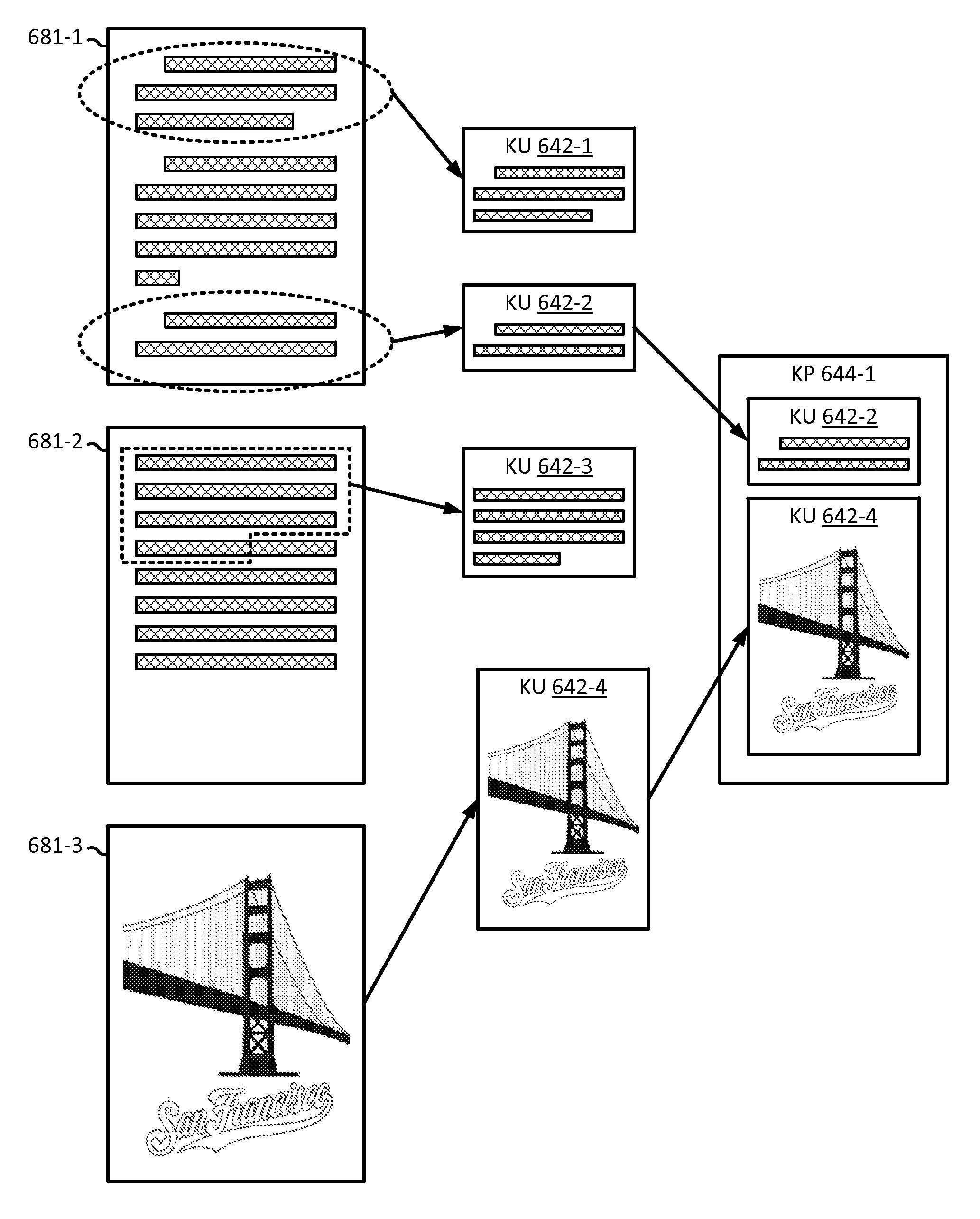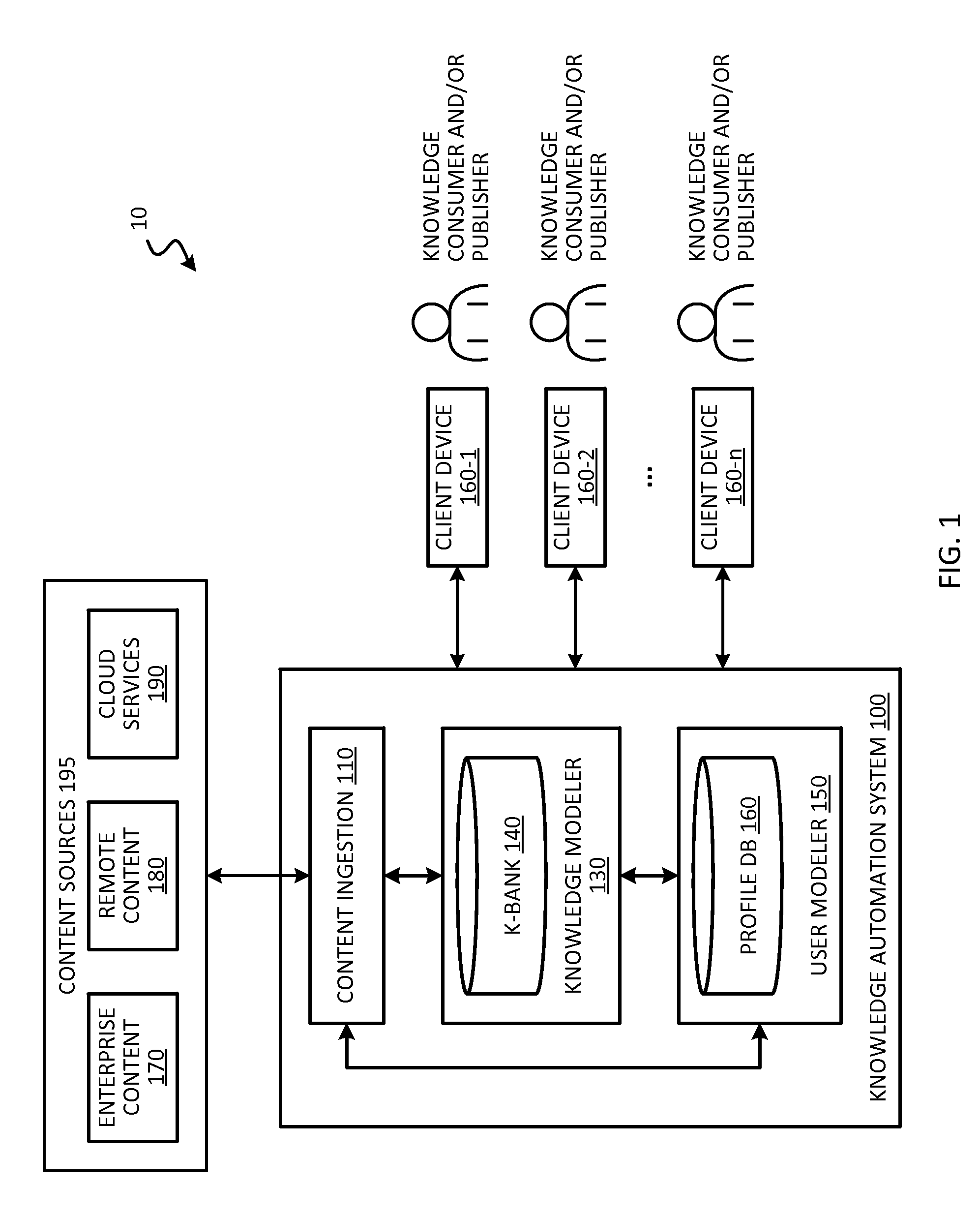Identification and bridging of knowledge gaps
a technology of knowledge gaps and identification, applied in the field of knowledge automation, can solve problems such as user overload, user difficulty in finding the right data for the right user, and user spending a large amount of time,
- Summary
- Abstract
- Description
- Claims
- Application Information
AI Technical Summary
Benefits of technology
Problems solved by technology
Method used
Image
Examples
Embodiment Construction
[0035]The present disclosure relates generally to knowledge automation. Certain techniques are disclosed for discovering data content and transforming information in the data content into knowledge units. Techniques are also disclosed for composing individual knowledge units into knowledge packs, and mapping the knowledge to the appropriate target audience for consumption. Techniques are further disclosed for identifying and filling knowledge gaps or topic areas in which usable knowledge in the system may be lacking.
[0036]Substantial amounts of data (e.g., data files such as documents, emails, images, code, and other content, etc.) may be available to users in an enterprise. These users may rely on information contained in the data to assist them in performing their tasks. The users may also rely on information contained in the data to generate useful knowledge that is consumed by other users. For example, a team of users may take technical specifications related to a new product re...
PUM
 Login to View More
Login to View More Abstract
Description
Claims
Application Information
 Login to View More
Login to View More - R&D
- Intellectual Property
- Life Sciences
- Materials
- Tech Scout
- Unparalleled Data Quality
- Higher Quality Content
- 60% Fewer Hallucinations
Browse by: Latest US Patents, China's latest patents, Technical Efficacy Thesaurus, Application Domain, Technology Topic, Popular Technical Reports.
© 2025 PatSnap. All rights reserved.Legal|Privacy policy|Modern Slavery Act Transparency Statement|Sitemap|About US| Contact US: help@patsnap.com



